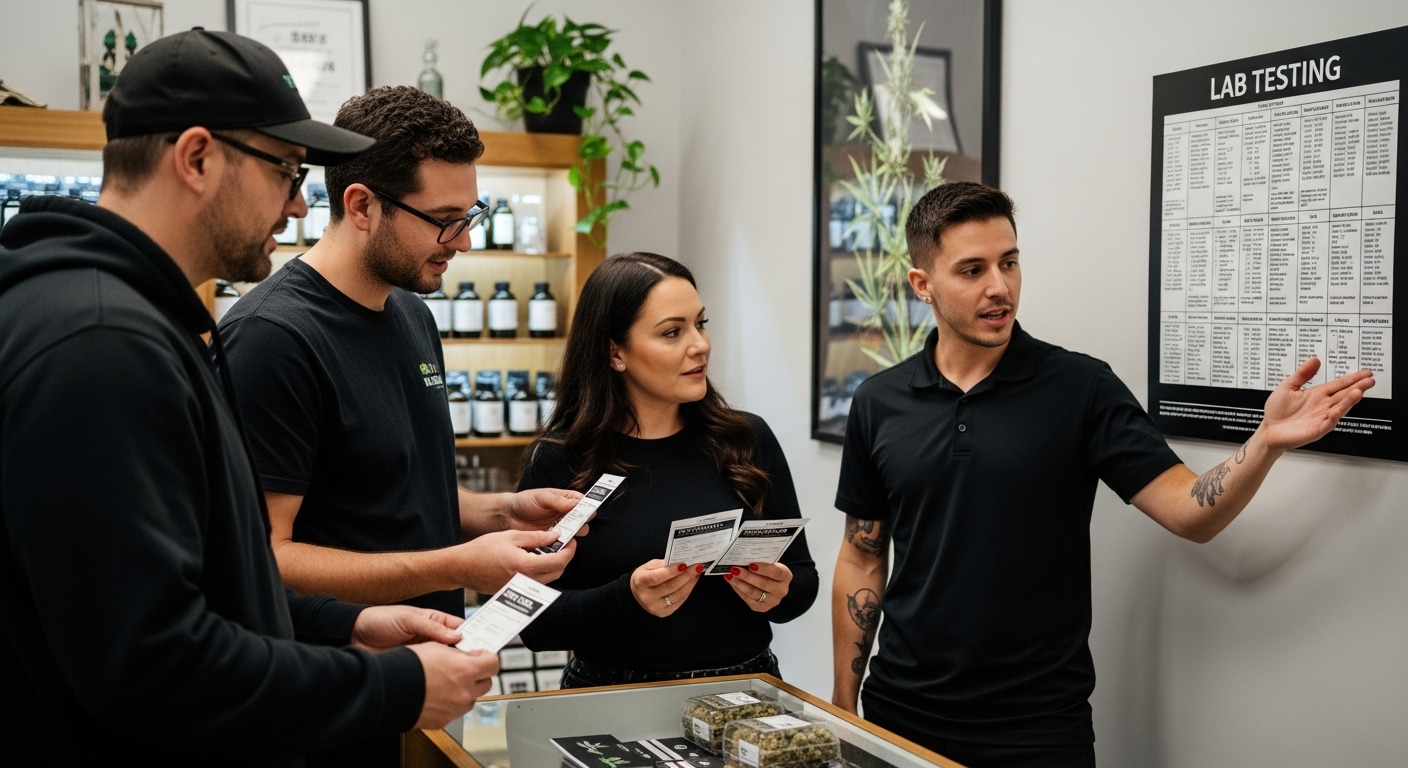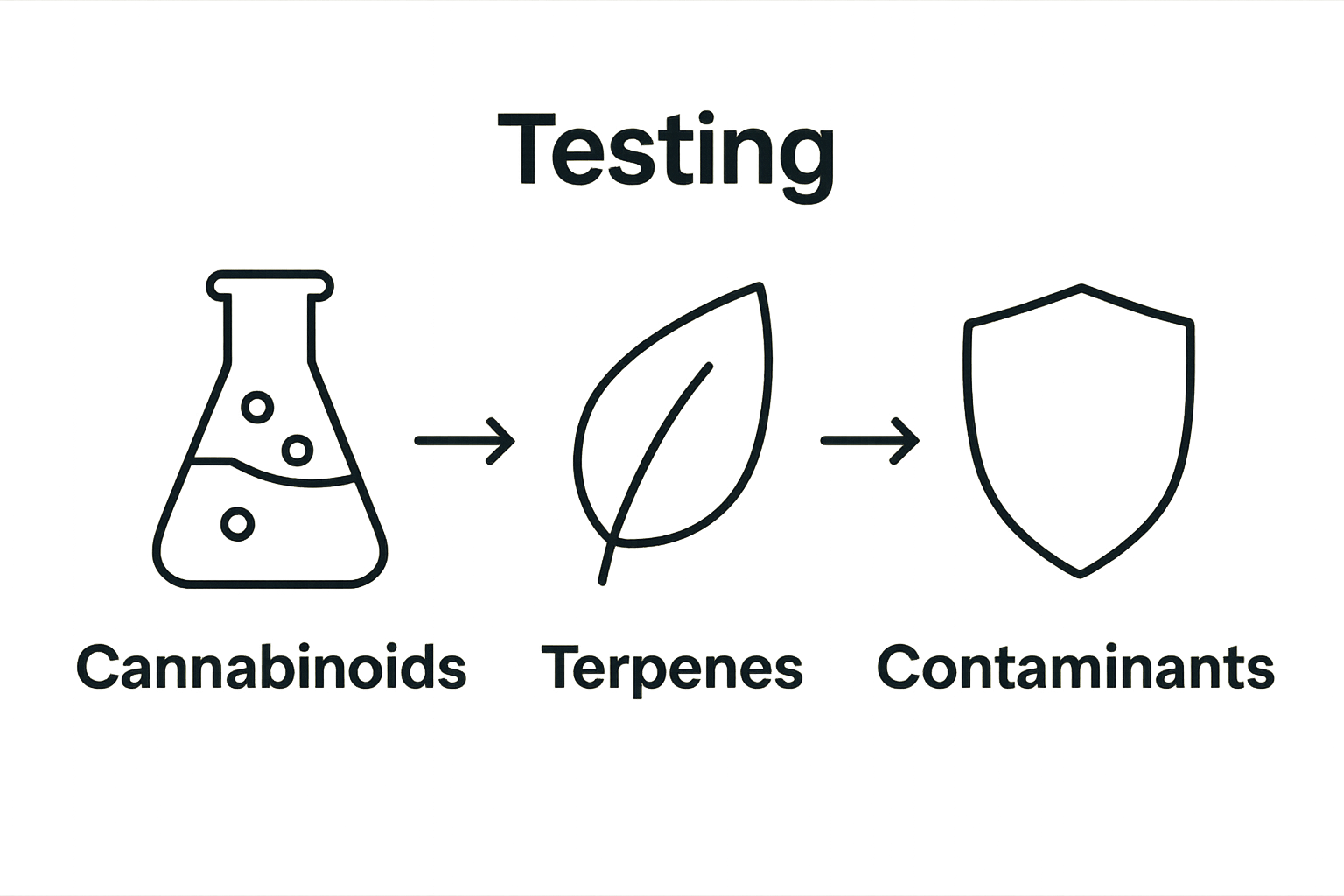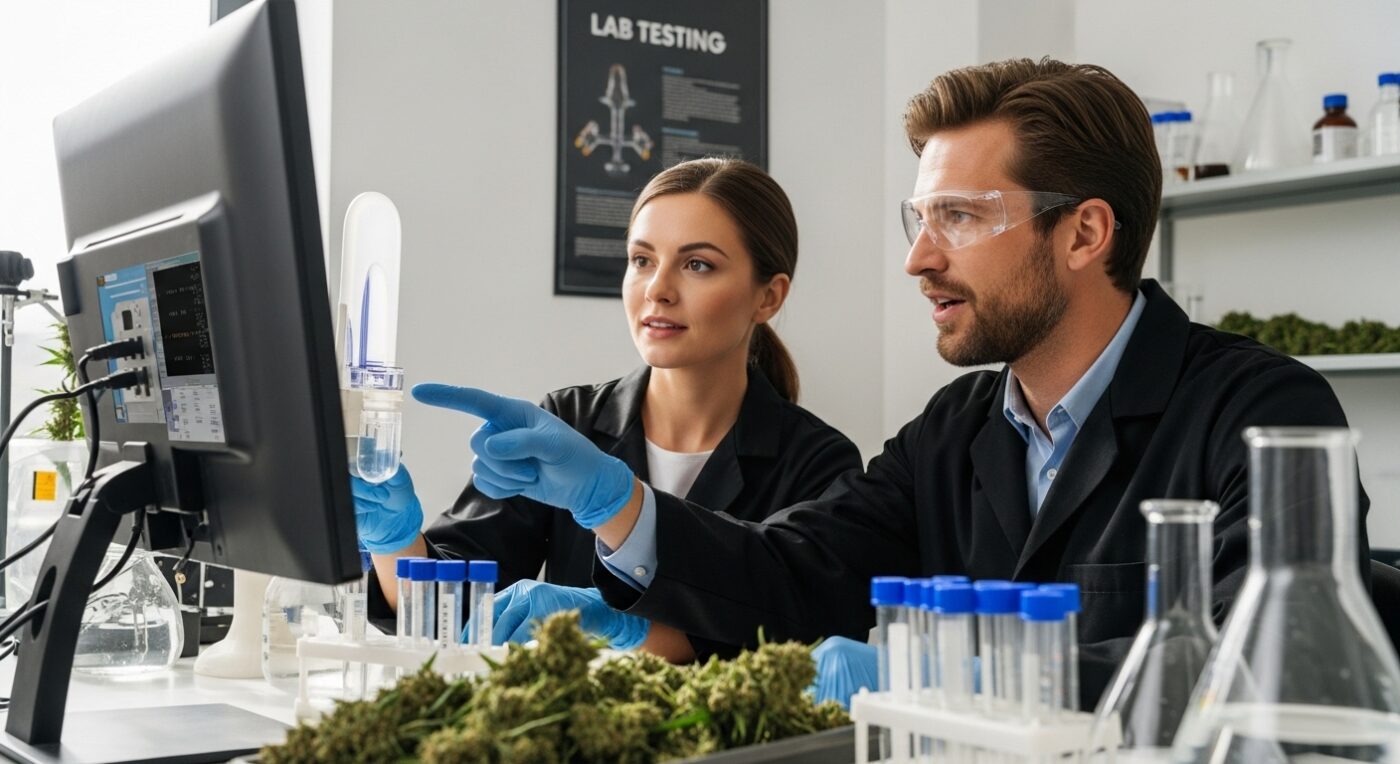Blog
Understanding the Role of Lab Testing in Cannabis
Lab testing has become a cornerstone of the modern cannabis industry. Nearly every legal cannabis product must pass through a series of scientific tests before it ever hits the shelves. Surprisingly, lab testing does a lot more than just check for THC and CBD levels. It can detect harmful contaminants and protect consumers from unseen risks. Most people think lab testing is just another regulatory hurdle, but it’s actually the invisible shield that keeps dangerous products off the market and gives buyers real peace of mind.
Table of Contents
- What Is Lab Testing And Its Purpose?
- Why Lab Testing Matters For Cannabis Consumers
- How Lab Testing Works: The Science Behind It
- Key Concepts In Cannabis Lab Testing Explained
- Real-World Impact Of Lab Testing On Quality And Safety
Quick Summary
| Takeaway | Explanation |
|---|---|
| Lab testing ensures product safety. | Rigorous testing prevents harmful contaminants from reaching consumers, safeguarding public health. |
| Clear cannabinoid profiles empower consumers. | Detailed reports show THC, CBD levels and other compounds, helping consumers make informed choices. |
| Transparency builds trust in cannabis products. | Thorough lab testing establishes credibility, allowing consumers to feel confident in product quality. |
| Advanced technologies enhance testing accuracy. | Sophisticated methods like HPLC and GC-MS ensure precise measurements of cannabinoids and contaminants. |
| Regulatory compliance protects consumer rights. | Mandatory lab testing regulates the cannabis market, ensuring products meet health and safety standards. |
What is Lab Testing and Its Purpose?
Lab testing in the cannabis industry represents a critical quality assurance process that ensures product safety, potency, and consumer protection. This scientific evaluation goes far beyond simple measurement, serving as a comprehensive examination of cannabis products to verify their integrity and compliance with regulatory standards.
Understanding the Fundamental Role of Lab Testing
The role of lab testing in cannabis production involves systematically analyzing product samples through sophisticated scientific techniques. These tests typically focus on several critical areas of assessment:
- Cannabinoid content verification
- Screening for potential contaminants
- Evaluating terpene profiles
- Detecting potential microbial threats
- Measuring pesticide and heavy metal residues
According to the California Department of Cannabis Control, laboratory testing is mandatory to protect consumer health and guarantee product transparency. By subjecting cannabis products to rigorous scientific scrutiny, manufacturers can provide consumers with detailed insights into what they are purchasing.
To help readers understand the various areas covered by cannabis lab testing, the table below summarizes the key types of analyses performed and their main purposes.
| Testing Area | Purpose |
|---|---|
| Cannabinoid Content | Verifies THC, CBD, and other cannabinoid levels |
| Terpene Profiling | Identifies flavor, aroma, and potential effects |
| Contaminant Screening | Detects pesticides, heavy metals, and residual solvents |
| Microbial Testing | Identifies bacteria, mold, and other microbial threats |
| Pesticide/Heavy Metal Residue | Ensures absence of harmful chemicals and metals |
| Consistency Across Batches | Confirms uniformity in quality and safety |
The Safety and Compliance Perspective
Lab testing serves multiple crucial functions beyond simple quality control. It acts as a protective mechanism that safeguards public health by identifying potential risks before products reach consumers. Sophisticated analytical techniques allow scientists to detect harmful substances such as mycotoxins, pesticides, and residual solvents that could pose significant health risks.
Professional laboratories use advanced equipment like gas chromatography, mass spectrometry, and high-performance liquid chromatography to conduct precise measurements. These scientific methods enable them to break down cannabis products into their fundamental chemical components, providing an unprecedented level of insight into product composition and potential contamination.
The comprehensive nature of lab testing means that consumers can trust that their cannabis products have been thoroughly examined for safety, potency, and overall quality. This process transforms lab testing from a regulatory requirement into a critical consumer protection mechanism, ensuring that every product meets stringent health and safety standards.
Why Lab Testing Matters for Cannabis Consumers
Lab testing is far more than a regulatory checkbox for cannabis consumers. It represents a critical safeguard that directly impacts personal health, product quality, and informed purchasing decisions. Understanding the profound significance of these scientific evaluations empowers consumers to make educated choices about their cannabis consumption.
Health Protection Through Comprehensive Analysis
Consumers face potential risks when purchasing unverified cannabis products. Lab testing provides a crucial protective barrier against numerous health hazards by identifying and eliminating dangerous contaminants before products reach the market. The comprehensive screening process targets several critical potential threats:
- Harmful microbial organisms
- Pesticide residues
- Heavy metal contamination
- Toxic solvent remnants
- Unexpected chemical interactions
According to research published in the National Institutes of Health, rigorous laboratory testing is essential for protecting consumers from potential adverse health effects associated with unverified cannabis products.
Transparency and Informed Consumer Choices
Modern cannabis consumers demand more than just product availability. They seek detailed information about potency, composition, and safety. Lab testing transforms this desire into actionable insights by providing precise chemical profiles and comprehensive safety assessments. This transparency allows consumers to make selections based on specific wellness goals, preferred cannabinoid ratios, and individual health considerations.
The detailed lab reports effectively demystify cannabis products, breaking down complex chemical compositions into understandable information. Consumers can now view exact percentages of THC, CBD, and other cannabinoids, understand terpene profiles, and verify the absence of potentially harmful substances. This level of detailed information represents a significant advancement in consumer empowerment within the cannabis industry.
By prioritizing lab testing, consumers gain more than just a product purchase they gain peace of mind knowing that their cannabis selections have been scientifically validated for safety, quality, and consistency.

How Lab Testing Works: The Science Behind It
Cannabis lab testing represents a sophisticated scientific process that transforms raw cannabis samples into comprehensive analytical reports. This meticulous examination involves multiple stages of advanced technological assessment, ensuring every product undergoes rigorous quality verification before reaching consumers.
Advanced Analytical Technologies
Professional laboratories leverage cutting-edge scientific instruments to conduct precise cannabis product evaluations. These sophisticated technologies enable researchers to deconstruct cannabis samples at the molecular level, providing unprecedented insights into product composition and potential contaminants.
This table provides an overview of the advanced analytical technologies mentioned in the article and describes their primary role in cannabis lab testing.
| Technology | Main Function |
|---|---|
| High-Performance Liquid Chromatography (HPLC) | Measures cannabinoid and terpene concentrations |
| Gas Chromatography-Mass Spectrometry (GC-MS) | Identifies and quantifies volatile compounds and contaminants |
| Polymerase Chain Reaction (PCR) | Detects microbial organisms and genetic material |
| Inductively Coupled Plasma Mass Spectrometry (ICP-MS) | Measures heavy metals and trace elements |
| Nuclear Magnetic Resonance (NMR) Spectroscopy | Analyzes molecular structure and confirms compound identity |
Key analytical technologies utilized in cannabis testing include:
- High-Performance Liquid Chromatography (HPLC)
- Gas Chromatography-Mass Spectrometry (GC-MS)
- Polymerase Chain Reaction (PCR) testing
- Inductively Coupled Plasma Mass Spectrometry (ICP-MS)
- Nuclear Magnetic Resonance (NMR) spectroscopy
According to the Centers for Disease Control and Prevention, these advanced technologies allow scientists to quantify cannabinoid concentrations, detect potential contaminants, and ensure product safety with remarkable precision.
Comprehensive Screening Protocols
Lab testing involves a multilayered approach to product analysis. Scientists systematically examine cannabis samples across several critical dimensions, including chemical composition, microbial presence, and potential environmental contamination. Each testing phase serves a specific purpose in guaranteeing product integrity.
The comprehensive screening typically includes detailed assessments of cannabinoid profiles, terpene compositions, pesticide residues, heavy metal concentrations, and microbiological characteristics. These intricate evaluations transform raw cannabis materials into scientifically validated products that meet strict regulatory standards.
By employing multiple testing methodologies, laboratories can provide consumers and regulatory bodies with transparent, data-driven insights into cannabis product quality. This scientific approach not only ensures safety but also helps establish trust in an industry that continues to evolve and mature.
Key Concepts in Cannabis Lab Testing Explained
Cannabis lab testing encompasses a complex ecosystem of scientific principles and analytical methodologies designed to ensure product safety, quality, and regulatory compliance. Understanding these fundamental concepts provides insight into the sophisticated world of cannabis quality control and consumer protection.
Cannabinoid and Terpene Profiling
At the core of cannabis lab testing lies the critical process of cannabinoid and terpene quantification. This scientific analysis goes beyond simple measurement, providing a detailed chemical fingerprint of each cannabis product. Researchers meticulously map out the precise concentrations of various compounds that define a product’s unique characteristics and potential effects.
Key elements examined during profiling include:

- Total THC and CBD percentages
- Minor cannabinoid concentrations
- Terpene composition and ratios
- Potential synergistic interactions between compounds
- Consistency across product batches
According to research published in Frontiers in Pharmacology, this comprehensive profiling helps establish standardized quality control mechanisms in the rapidly evolving cannabis industry.
Contaminant Detection and Risk Mitigation
Contaminant screening represents another crucial aspect of cannabis lab testing. Scientific protocols are designed to identify and quantify potential health risks that might be present in cannabis products. These assessments target a wide range of potential harmful substances that could compromise consumer safety.
The contaminant detection process systematically evaluates multiple potential risks, including biological and chemical threats. Laboratories employ advanced scientific techniques to detect microscopic dangers that might be invisible to the naked eye. This rigorous approach transforms lab testing from a simple regulatory requirement into a critical consumer protection mechanism.
By establishing comprehensive testing standards, the cannabis industry demonstrates its commitment to transparency, scientific integrity, and consumer well-being. These key concepts highlight the sophisticated scientific processes that ensure cannabis products meet the highest standards of safety and quality.
Real-World Impact of Lab Testing on Quality and Safety
Lab testing has transformed the cannabis industry from an unregulated market to a scientifically validated ecosystem of consumer protection. By implementing rigorous analytical protocols, laboratories have created a critical barrier that safeguards public health and ensures product reliability across diverse cannabis markets.
Consumer Protection Through Scientific Verification
The real-world implications of comprehensive lab testing extend far beyond simple regulatory compliance. These scientific assessments directly mitigate potential health risks associated with unverified cannabis products. By systematically screening for contaminants, laboratories prevent dangerous substances from reaching consumers, effectively serving as the first line of defense in product safety.
Significant areas of consumer protection include:
- Detecting harmful pesticide residues
- Identifying potentially toxic heavy metals
- Screening for dangerous microbial organisms
- Verifying accurate cannabinoid concentrations
- Preventing the distribution of contaminated products
According to research published in Frontiers in Pharmacology, laboratory testing plays a crucial role in protecting consumers by providing comprehensive screening that addresses the biological variability and potential contamination risks inherent in cannabis production.
Transforming Industry Standards and Public Trust
Lab testing has fundamentally reshaped the cannabis industry’s approach to quality control and consumer safety. What was once an opaque and potentially risky market has evolved into a transparent, scientifically validated ecosystem. By establishing standardized testing protocols, laboratories have created a framework that promotes accountability, consistency, and consumer confidence.
The systematic documentation and verification provided by lab testing offer consumers unprecedented insight into product composition. Detailed lab reports now provide comprehensive information about cannabinoid profiles, potential contaminants, and overall product quality. This level of transparency empowers consumers to make informed decisions and builds trust in an industry that has historically struggled with credibility.
Through meticulous scientific analysis, lab testing has emerged as a critical mechanism for ensuring the safety, reliability, and integrity of cannabis products in an increasingly regulated and consumer-conscious marketplace.
Shop Lab-Tested Cannabis Vapes With Total Confidence
Are you concerned about product safety and transparency when choosing a cannabis vaporizer? This article highlights how lab testing ensures the safety, potency, and purity of cannabis products. Many consumers worry about contaminants and want verified cannabinoid profiles to make informed decisions. Our products at Shorties Disposable Vape are backed by comprehensive, independent lab analysis so you always know exactly what you are getting.

Experience true peace of mind with every purchase. Explore our premium disposable vape lineup and access detailed product information and lab results to verify authenticity and quality. Take the guesswork out of vaping and shop now on Shorties Disposable Vape for certified safety and unmatched convenience.
Frequently Asked Questions
What is the purpose of lab testing in cannabis?
Lab testing in cannabis serves as a quality assurance process that ensures product safety, potency, and consumer protection by analyzing cannabis products for contaminants and verifying their composition.
How does lab testing protect consumers from health risks?
Lab testing protects consumers by identifying harmful substances such as pesticides, heavy metals, and microbial threats before products reach the market, ensuring safety and quality.
What types of tests are typically conducted during cannabis lab testing?
Typical tests conducted during cannabis lab testing include cannabinoid content verification, contaminant screening for pesticides and heavy metals, evaluation of terpene profiles, and microbial testing.
Why is transparency in lab testing important for cannabis consumers?
Transparency in lab testing is important because it provides consumers with detailed and reliable information regarding product composition, ensuring informed purchasing decisions and promoting trust in the cannabis industry.

